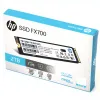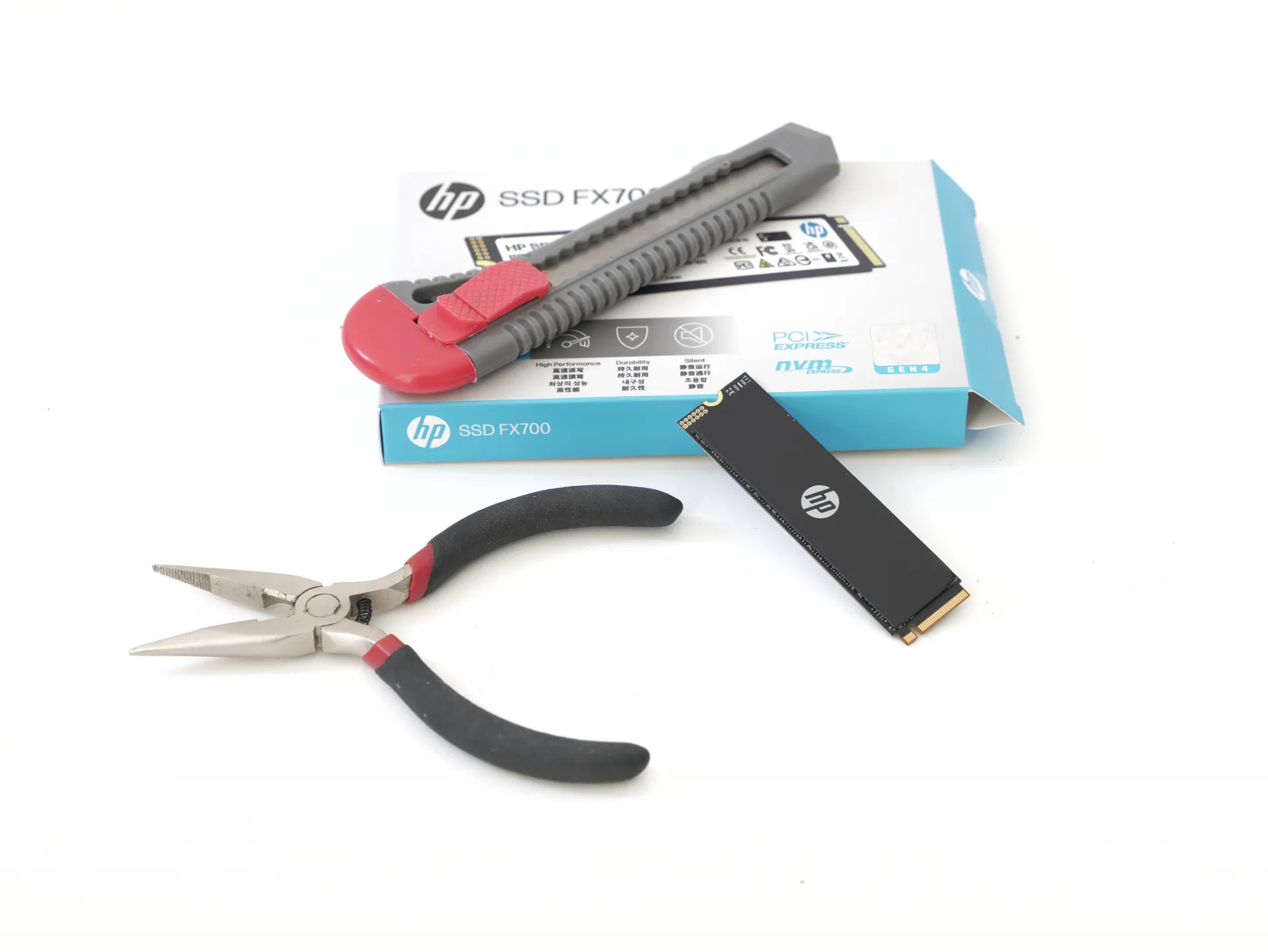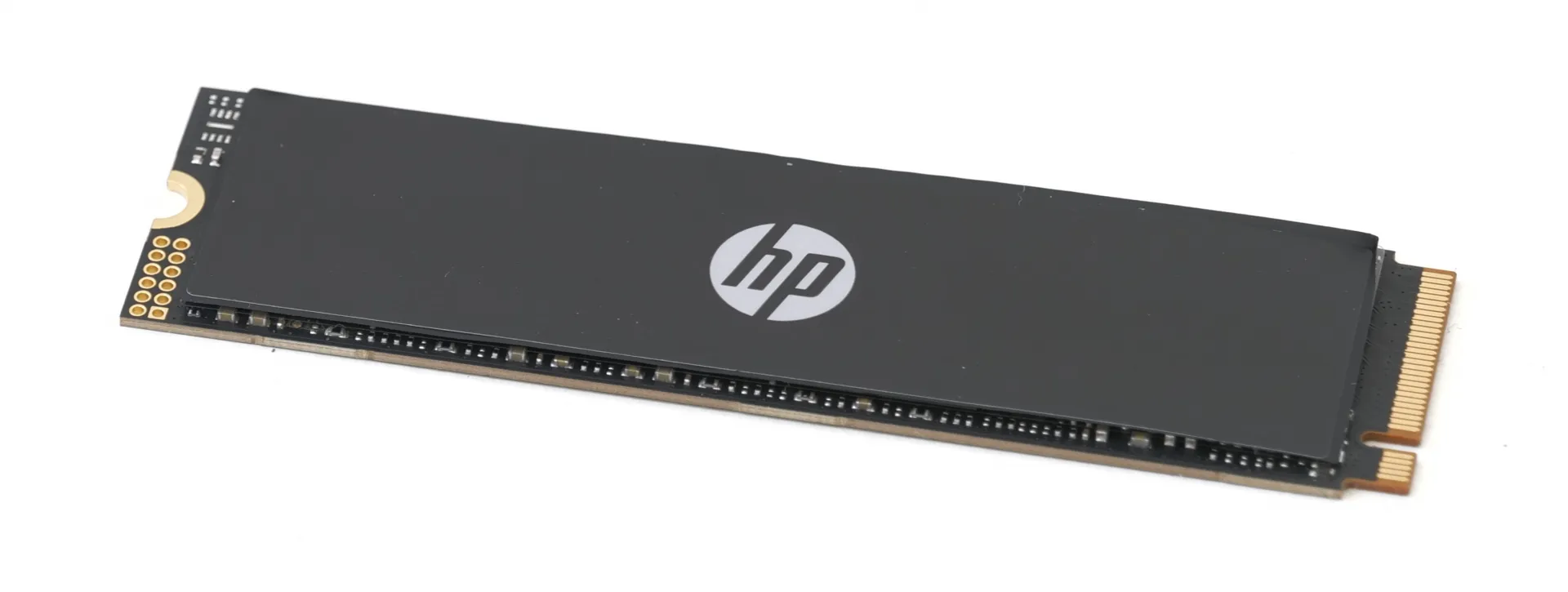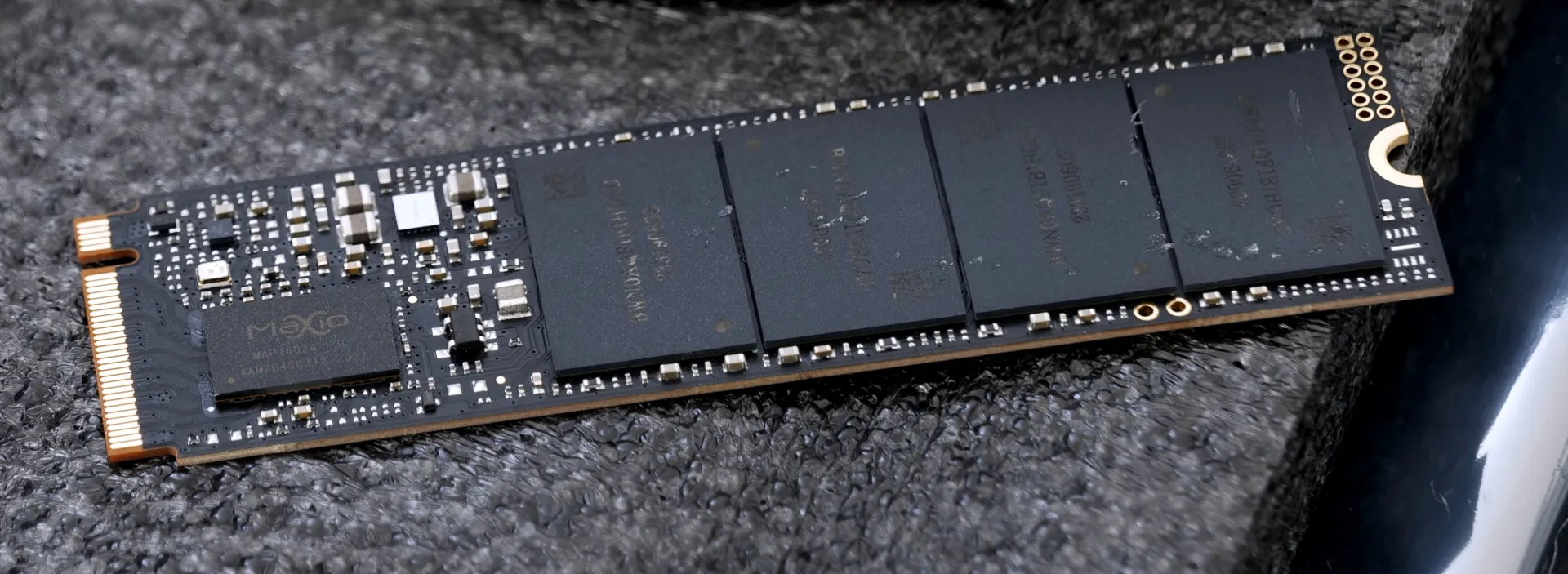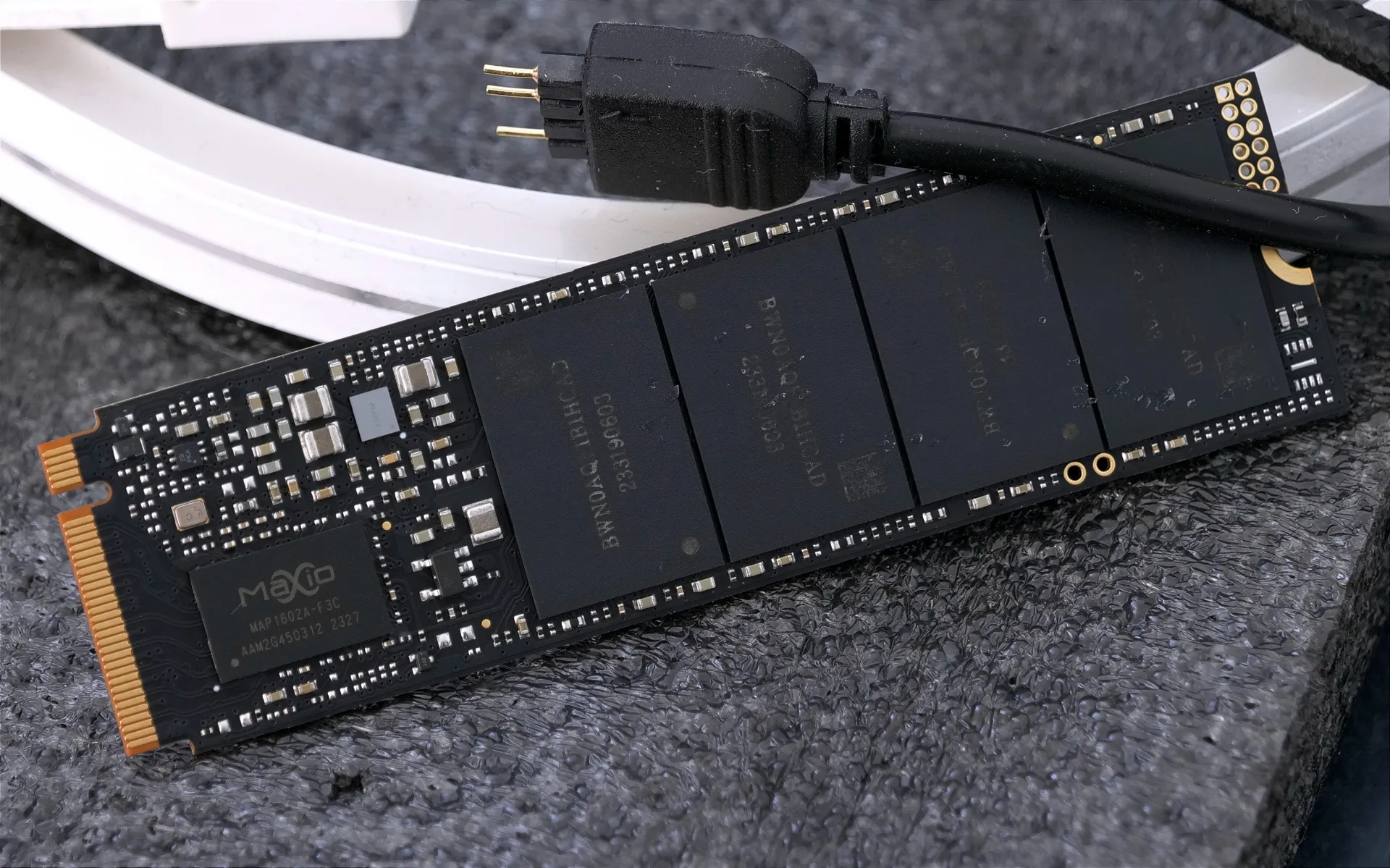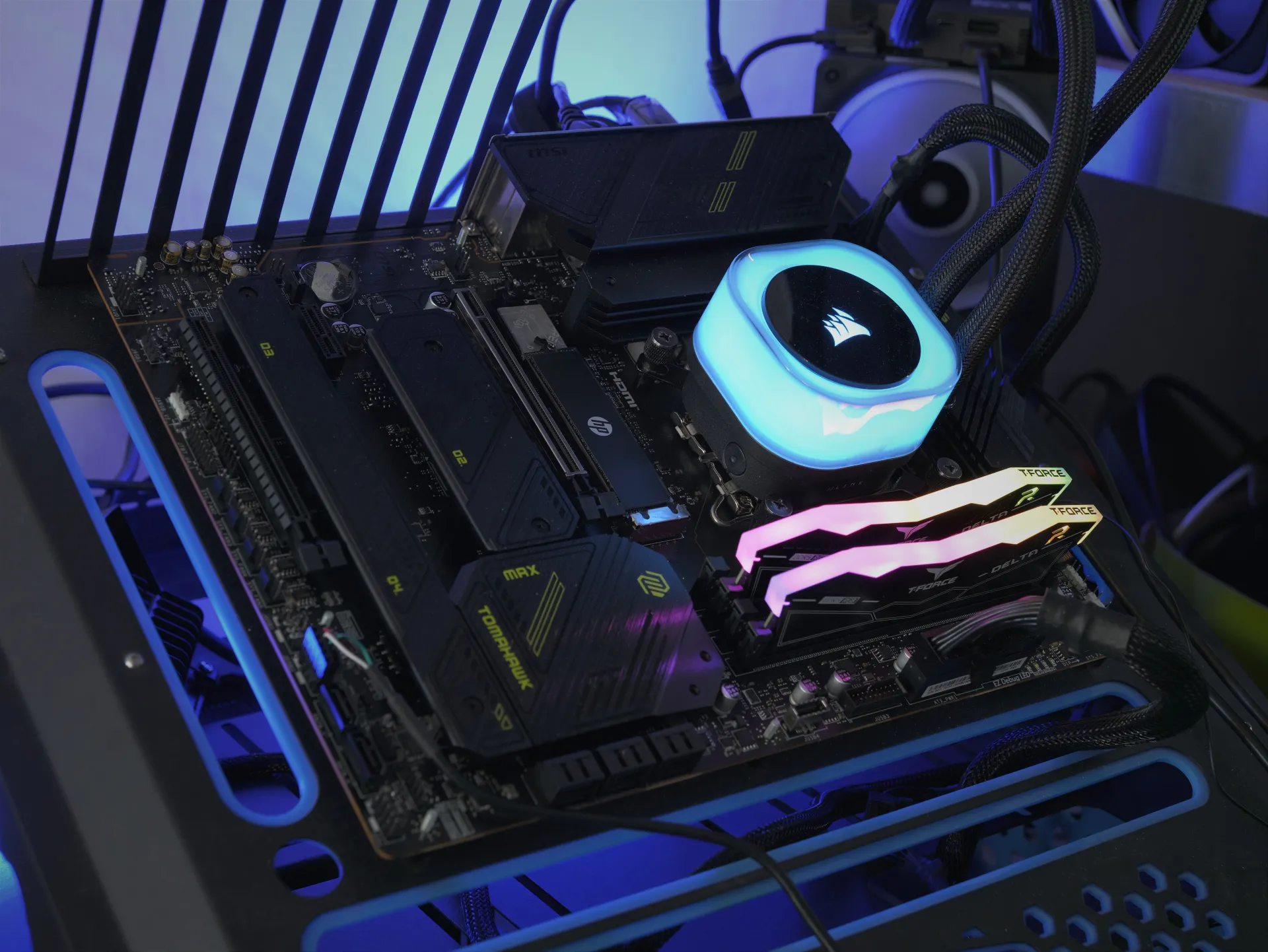Product Showcase
The photographs in this gallery were taken at a high quality and then cropped and scaled back down. You should have no trouble installing the M.2 unit onto a motherboard that supports the NVMe v1.4 protocol. It is supported by the vast majority of motherboard chipsets. To be sure, contact the motherboard maker to see if your motherboard is equipped with an x4-lane PCIe Gen 4.0 interface and a CPU that is compatible with it.
Of course, PCIe gen 4.0 SSDs are backward compatible; thus, PCIe 3.0 will work as well; however, the interconnect (PCI slot) is halved in bandwidth by generation, and this has a considerable effect on performance. The latest Windows 10 and soon 11 iteration has an up-to-date NVMe 1.4 protocol driver natively, so it is unnecessary to install a 3rd party driver. You are strongly recommended to have the latest BIOS firmware of your motherboard up to date though.
The updated SKU now comes ith a heatsink, of course there's an even cheaper SKU available without one, if your motherboard has a proper M2 heatsink we'd absolutely recommend that, the SSD however does need some sort of cooling as it does run hot under heavy workloads.
Typically we advise you to seat the SSD under a motherboard heatsink and hide it away. Not only does that look cool, but it also keeps it cool much better. The compact M.2 2280 form factor ensures compatibility with the next-generation desktop and mobile platforms that support the M.2 PCIe slot and interface.
The 80 on 2280 is short for 80mm, aka, the PCB length, and 2280, you guessed it now .. 22mm for its width. It is that simple. It has NAND chips on one side and a controller that was previously unknown to us.
| SKU | Capacity | MSRP |
| FX700 | 512GB | $ 44.99 |
| FX700 | 1TB | $ 67.99 |
| FX700 | 2TB | $ 99.99 |
| FX700 | 4TB | $ 199.99 |
Maxio Technology, originally recognized for its cost-effective SATA SSD controllers, has branched into the realm of high-performance storage solutions with the introduction of its PCIe interface drives. The company's latest offering, the Maxio MAP1602A—also referred to as MAP1602 or MAP1602-I—marks a significant step in this direction. Emerging as an independent entity from its predecessor, JMicron, Maxio has continued to develop SSD controllers. The MAP1602A controller is fabricated using the 12nm process technology at TSMC, integrating an ARM Cortex-R5 architecture. This is a shift from the previous 22nm process utilized in the manufacture of the MAP1202 controller. The MAP1602A is designed as a four-channel, DRAM-less controller, an architecture that typically indicates high efficiency in operation. One of the key technical features of this controller is its support for a 2400 MT/s bus, a specification that enables it to fully utilize the bandwidth provided by a PCIe 4.0 interface. This capability is not common among the DRAM-less PCIe 4.0 controllers previously assessed, and it is anticipated to enhance power efficiency during usage.
The solid-state drive incorporates BIWIN QLC NAND. In terms of performance, the SSD is reported to achieve sequential read speeds up to 7,200MB/s and write speeds up to 6,200MB/s. This model is distinctive in that it operates without a DRAM cache. The omission of DRAM cache is a design choice that can reduce manufacturing costs and decrease power consumption, with the power usage not exceeding approximately 5.5 watts. This design decision positions the FX700 as an accessible option for consumers with limited budgets and for typical usage scenarios. SSDs lacking a DRAM cache, such as the FX700, may exhibit reduced performance during extensive sequential data transfers.
